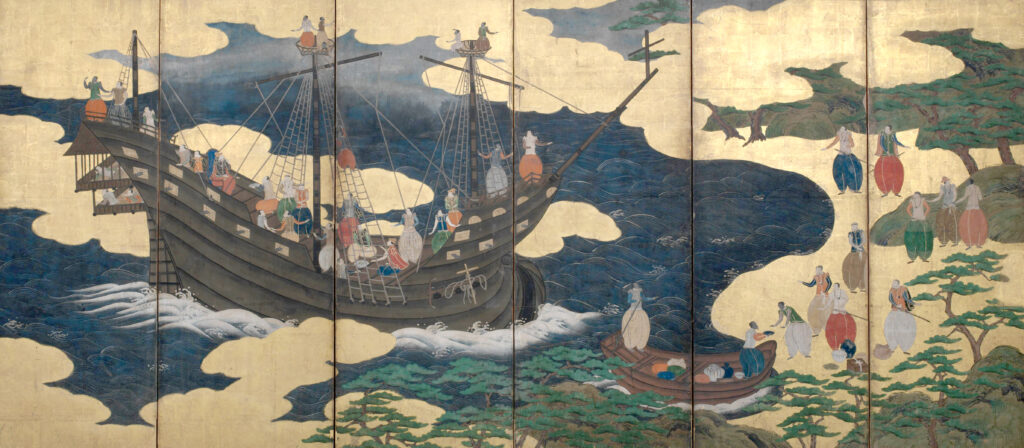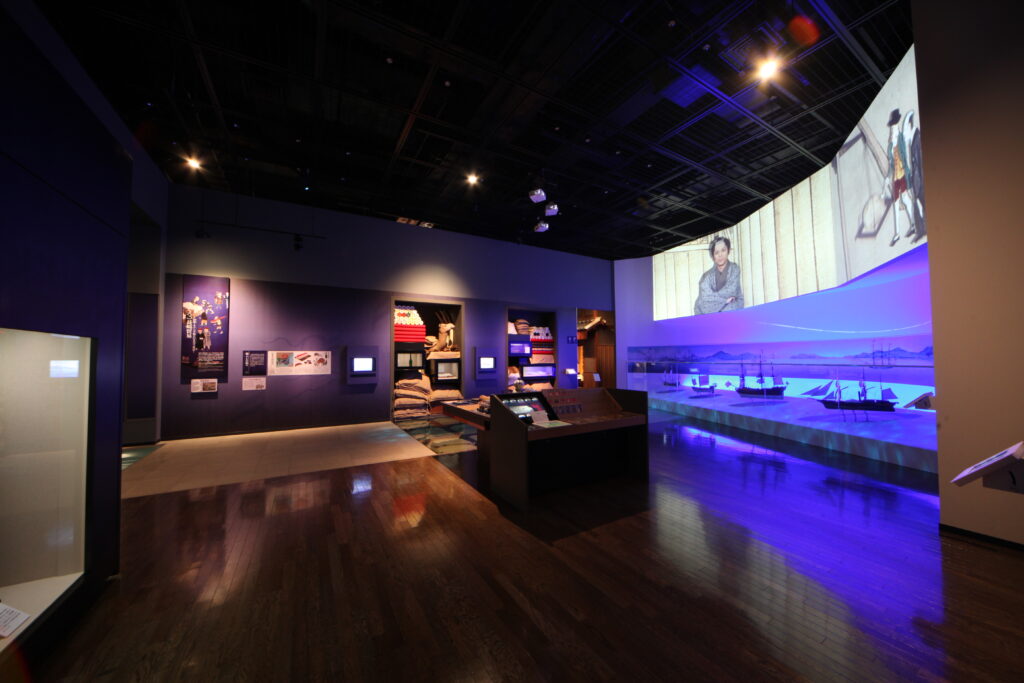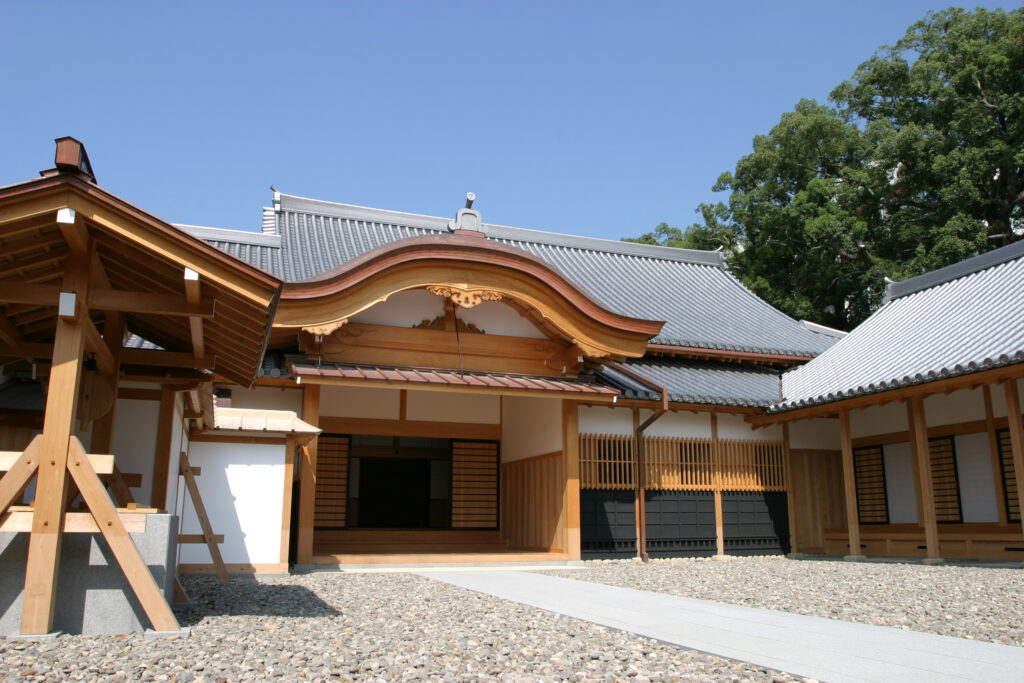Permanent Exhibition
The permanent exhibition on the second floor is divided into the “Historical and Cultural Zone” and “The Japanese Government of Nagasaki Zone”, and showcases the Museum’s extensive collection of objects related to Nagasaki’s early-modern history of overseas exchanges and the Nagasaki Magistrate’s Office.

Dedicated to the history of overseas exchanges in early-modern Nagasaki, this zone explores the city’s history and culture from the arrival of the first European ships in the 16th century to the exchanges with Korea, China, and the Netherlands, the Nagasaki trade, and up to the late Edo period (1603-1868) and the beginning of the Meiji era (1868-1912). The exhibition offers a variety of perspectives and uses original records and artifacts that evoke the past. Additionally, visitors can learn history while having fun with our interactive exhibits, such as the corners where they can touch trade goods from the Edo period, or assemble a model of Nagasaki’s Meganebashi (Spectacles Bridge) using wooden building blocks.

The Nagasaki Magistrate’s Tateyama Office once stood on the premises of this Museum, and part of it has been reconstructed in its original location based on Edo period maps and archeological finds.
The exhibition rooms showcase the role and functions of the Nagasaki Magistrate’s Office, a government agency established by the Edo shogunate in Western Japan, historical episodes associated with the Office, and Christian-related exhibits.

